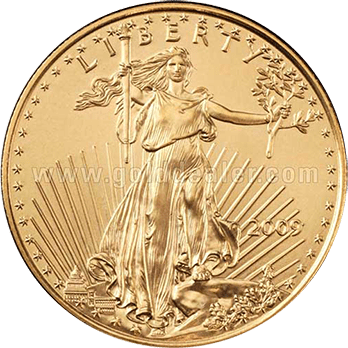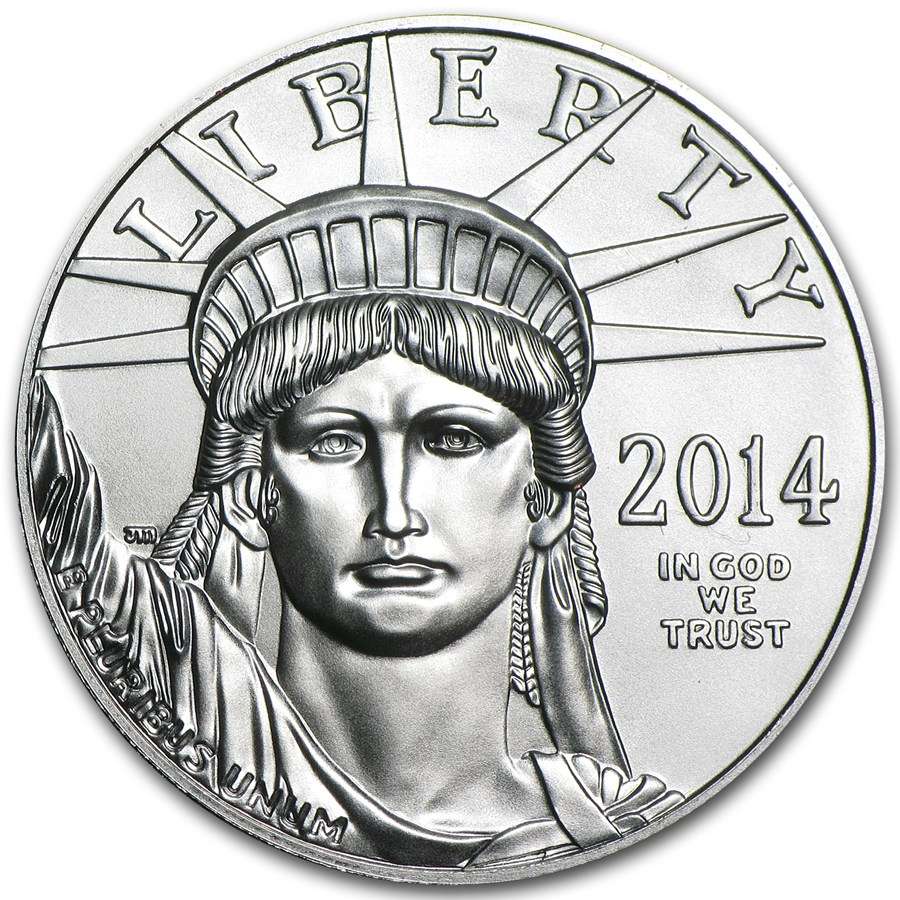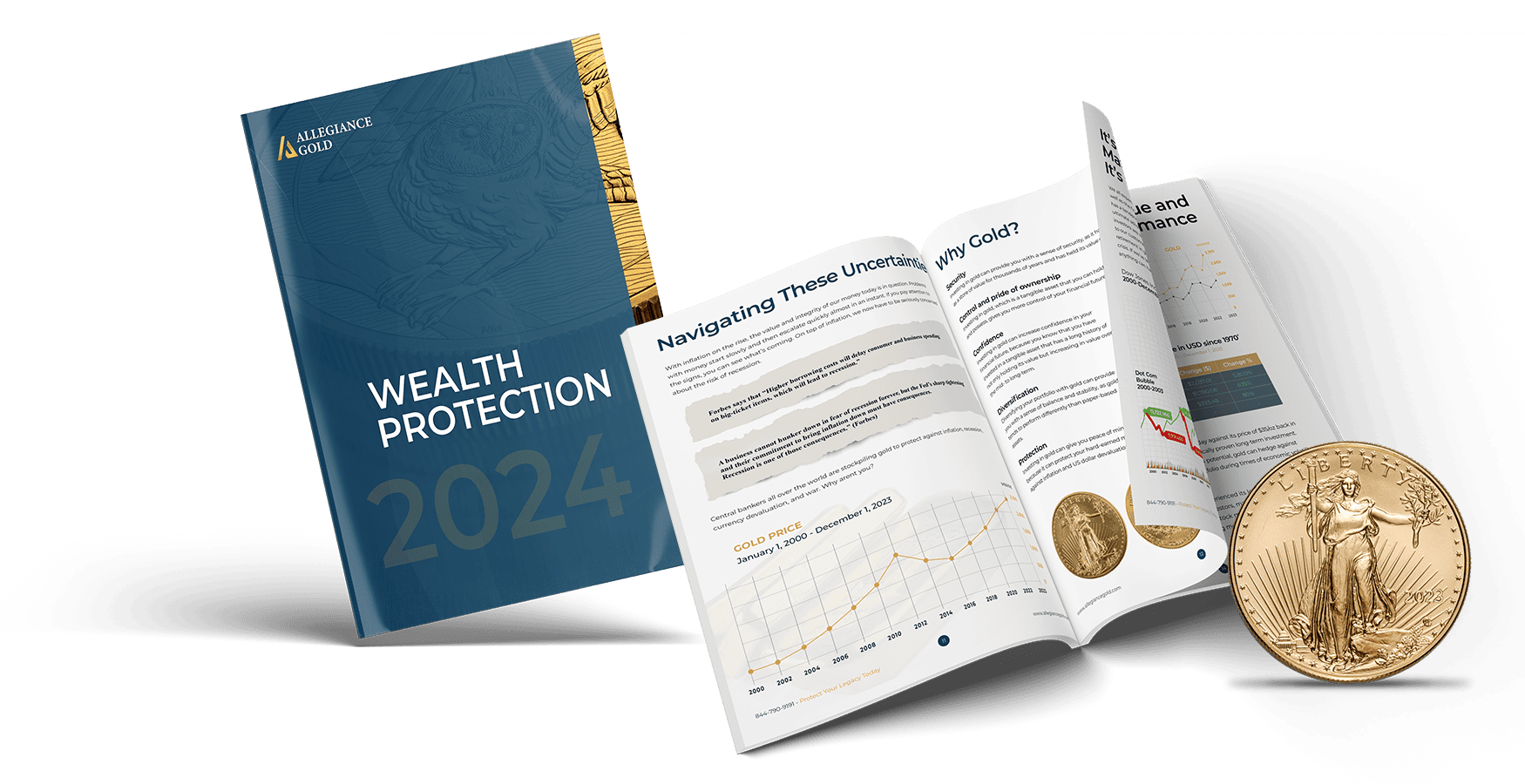The Why
The price of gold tends to fluctuate in times of crisis, political turmoil, and economic uncertainty. During the great recession, for example, gold prices jumped to all-time highs and have once again been on a steady climb during the COVID-19 pandemic.
To understand why this happens it helps to look at the relatively recent history of gold and currency. On April 20, 1933, at the urging of President Franklin Roosevelt, the US abandoned the gold standard—the original method of establishing the worth of the US dollar. Since then, rather than being backed by gold, the US dollar is fiat currency. In other words, it is valued by decree. Our current monetary system depends on a declaration of value by the government that must be accepted and believed to hold the value of a dollar by all in society. This type of system can prove to be unstable and has failed in the past due to hyperinflation. Historical events such as war, reform, and independence have also shown the fragility of our current system.
“Paper money eventually returns to its original value, zero.” – Voltaire
Since the government cannot print gold, during times of market stress it acts as a protective hedge against inflation while helping to diversify your investment portfolio. The importance of diversification can be summed up in a well-known saying, “don’t put all your eggs in one basket”.
What we see happening today is a desperate attempt by governments to use fiscal stimulus to keep afloat an economy that has been hit hard by the pandemic. As governments around the world continue to print dollars to avoid a recession, the value of fiat currency takes a dive as a result of dilution. It is a simple cause-and-effect in that the more money the government prints, the less the dollar is worth. As a result, you see gold and other precious metals rising as governments print or digitally create trillions of new dollars.
As simple as this sounds, navigating the gold investment market can be complex and overwhelming for those new to the game. This is why there are so many ways to invest in gold—from holding the physical metal to buying an ETF or the stocks of producing gold mining companies.
Protect your retirement, and request a FREE Investment Guide
The How
Gold futures and options: This type of investment should be reserved for sophisticated traders who have extensive experience and knowledge of the market. Options on futures are essentially a right to buy or sell an asset at a set price and time.
Exchange-Traded Funds: ETFs claim to be backed by gold, but they pose risks in the event of a systemic disruption. This so-called counterparty risk means that, unlike holding physical gold, you rely on someone else to deliver the value represented by the ETF. Some ETFs claim to be backed one-for-one with enough ounces of gold to match the value of the paper asset, and in some cases, they allow investors to request delivery.
Gold Mining Companies: The gold market itself is unique and investing in a gold mining company has its own advantages. A gold mining company is the only business in the world that can guarantee to sell everything they produce. Additionally, as gold prices go up profit for these companies goes up as well, and generally, so do the share prices. There are also very popular ETFs that aggregate various mining companies into a basket with one of the most well-known being the VanEck Vectors Gold Miners ETF, GDX.
Physical gold: Physical gold and other precious metals can be bought as bullions or coins and can be easily liquidated in the unlikely case of economic collapse. With the COVID-19 pandemic shaking world economies, a currency reset is already being discussed by world leaders. A currency reset is much more likely and owning precious metals ensures that your wealth is protected. Having an asset with real value that you can hold and feel can be reassuring in times of market stress. Additionally, you have the option to store it yourself, at a bank, or a facility that specializes in storing and protecting precious metals.
Gold IRA: IRA, or Individual Retirement Account is a retirement account that can be set with either a tax-free growth or tax-deferred basis. A Gold IRA is similar to a regular IRA but is specialized in that it allows investors to hold gold bullions or gold coins instead of paper assets. Though the name itself specifies gold, it can consist of other precious metals such as silver, platinum, and palladium. Now, you may be asking how a Gold IRA works and what benefits are there compared to a traditional IRA or Roth IRA. Diversifying your retirement portfolio with a Gold IRA can be a form of insurance, especially in times of economic uncertainty. Gold prices typically move in the opposite direction to paper assets, so having both ensures you will be covered in any future circumstances that may result in inflation such as a recession. History, known to repeat itself, may make gold the standard once again.
Now, more than ever, diversifying your retirement portfolio could be what saves you in the midst of this financial crisis. Investing in a self-directed IRA with Allegiance Gold will provide a hedge against inflation, something that is becoming more and more a threat in a post-pandemic economy. Allegiance Gold makes it easy to navigate regulations and take advantage of annual deductions up to $6,500.
Protect your retirement and schedule a free consultation with one of our Senior Portfolio Managers or contact us at Allegiance Gold today.
The Where
Where to buy gold and other precious metals
Step 1: Choosing – First you have to choose the metal, size, and between mint vs. metal cast. Allegiance Gold has direct access to the most recognized mints, such as the U.S. Mint and Royal Canadian Mint, which secures the highest quality products directly from the source, and benefits from volume purchases. As a result, our prices are one of the most competitive in the industry.
Step 2: Identify the desired coin and bar’s weight, producer, and purity. Call Allegiance Gold to speak with a professional and seasoned account executive. Experience customer service at its best! We’ll discuss your diversification strategy and select your metals.
Step 3: Decide where to store your precious metals. You can store them yourself, at a bank, IRA custodians, depositories, or a facility that specializes in storing and protecting precious metals. After you have completed our secure checkout process, your fully-insured purchase will be discreetly shipped either to a depository or directly to you. Signature is required upon delivery. Enjoy FREE shipping on qualified orders.
Step 4: Choose a gold company – To avoid scams and fake coins, make sure the company is accredited with third-party sources such as BBB, Trustlink, Chamber of Commerce, and others. Allegiance Gold has the highest rating across all major consumer protection agencies and offers the highest prevailing price in the market when clients sell back their metals to Allegiance Gold.



 Gold Products
Gold Products Silver Products
Silver Products Platinum
Platinum